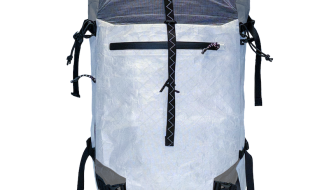
Illustration by Alex Nabaum
It wasn’t long ago when standard protocol for gathering the daily avalanche bulletin meant calling in to a recorded message. Now, there are web-based forecasts, graphic interpretations of hazards and apps to upload observations. And while the daily bulletins will never be reduced to 140 characters on Twitter, avalanche centers are looking to new-age platforms to gather observations and share information.
“I think it’s critical because people get information in a lot of different ways, and as a public warning service, we have to try to reach people any way we can,” says Ethan Greene, director of the Colorado Avalanche Information Center (CAIC), which publishes daily web-based avalanche forecasts for 10 zones throughout the state.
According to Greene, Twitter (@friendsofcaic) is the CAIC’s greatest social-media asset, ideal for when it’s necessary to update beta within a forecast period. “If we get some critical information during the day that we feel like people can use,” Greene says, “we’ll send that out over Twitter and hopefully get it into peoples’ hands faster.”
For the Northwest Avalanche Center, Instagram (@nwacus) is the account of choice for information sharing. NWAC utilizes a network of eight professional observers throughout the state to relay field information on snowpack, weather and stability to its forecasters and to the public, sometimes through square photos and short narratives.
“Unfortunately, people aren’t going to the website as much as they’re checking Instagram, so it’s a really effective tool to get some of this messaging across,” says Nick Rustigian, program coordinator for NWAC. “Almost all these photos get a ton of positive feedback and people love getting the conditions updates right there on the phone.”
In terms of gathering field observations, both NWAC and CAIC suggest backcountry users submit avalanche and snowpack observations through conventional means—their websites and newly released apps. Utah Avalanche Center also encourages this, but welcomes observations through social media using the hashtag #utavy. “The forecasters have a computer dedicated to that hashtag,” says Bo Torrey, program coordinator for UAC, “so any time something comes it’s automatically pulled up, so they can get that information super easy and super fast.”
To improve how information can be shared with forecast centers and among users, Avatech, the Park City, Utah-based maker of snow-safety technology, launched their updated Avanet app late last year. The app offers route-tracking and planning functions, a la Strava, but with the added feature of observation reporting.
Such observations can be shared in real time with nearby backcountry travelers and regional forecast centers, and Aaron Carlson, executive director of Friends of the CAIC, is excited at the prospect of gathering additional field data. “Right now, we’re not getting enough observations, especially here in Colorado,” Carlson says. “I don’t know how many people will submit obs through the network, but I’m hoping it’s a good amount.”
Ethan Greene is excited, too. “I think it has the potential to really change the structure of information we put out. We certainly haven’t seen anything like it yet,” Greene says.
“I’d like to think that the forecast centers have an evolving role. We may be changing how we provide information to people and what our role is,” Green continues. “Our end goal is promoting pubic safety and the more people and partners we have in that, the better.”
—
To get the February issue, visit the Backcountry Magazine store.










Related posts:
2016 Beer Guide: Editors' Choice
Backstory: The Last Generation of Skiers
Leading the Charge: In the AMGA, where are all the women?
Snow Woes: Will There Always Be Winter?